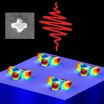(Press-News.org) ITHACA, N.Y. – With news reports of toxic, cadmium-tainted rice in China, a new study describes a protein that transports metals in certain plants and holds promise for developing iron-rich but cadmium-free crops.
Iron and cadmium are both found in soil and are interchangeably taken up by iron transporters in plants. Pollution and heavy fertilizer use have increased soil cadmium levels in China, for example. In humans, cadmium can damage internal organs and cause cancer. At the same time, iron is an essential nutrient for plants and humans. Iron deficiency affects 30 percent of the world's population, particularly in developing countries.
The Cornell-led study, published in The Plant Cell, describes an important role of a protein that transports nutrients – OPT3 – in maintaining balance of the essential micronutrient iron in Arabidopsis, small plants related to cabbage and mustard that are used as models for studying plant biology.
OPT3 function in plants was previously unknown. The new work finds that OPT3 transports iron and is involved in signaling iron concentrations – from leaves to roots – to regulate how much iron from the soil is needed by the plant. This function allows the plant to partition cadmium away from the edible portions of plants, including seeds (grain).
"One would hope that this transporter can be used to produce iron-fortified rice and other grain crops one day," said Olena Vatamaniuk, associate professor of crop and soil sciences, and the paper's senior author. "Our work suggests that manipulation of the expression of OPT3 can provide promising avenues for targeted biofortification strategies directed at increasing iron density, while omitting cadmium, in the edible portions of crops."
INFORMATION:
Findings may advance iron-rich, cadmium-free crops
2014-06-11
ELSE PRESS RELEASES FROM THIS DATE:
Manipulating and detecting ultrahigh frequency sound waves
2014-06-11
An advance has been achieved towards next generation ultrasonic imaging with potentially 1,000 times higher resolution than today's medical ultrasounds. Researchers with the U.S. Department of Energy (DOE)'s Lawrence Berkeley National Laboratory (Berkeley Lab) have demonstrated a technique for producing, detecting and controlling ultrahigh frequency sound waves at the nanometer scale.
Through a combination of subpicosecond laser pulses and unique nanostructures, a team led by Xiang Zhang, a faculty scientist with Berkeley Lab's Materials Sciences Division, produced acoustic ...
Famine fear won't sway minds on GM crops
2014-06-11
ITHACA, N.Y. – A sack-hauling time traveler from the 21st century lands in an Irish potato field in 1849, just before a terrible famine, and asks: If you thought genetically modified potatoes could avert late blight disease, spare a million countrymen from starvation and keep another million from emigrating off the Emerald Isle, would you plant these newfangled spuds?
Fast forward to the Internet Age, when communication researchers ran 859 U.S. grocery shoppers through a similar thought experiment: Half the subjects in an online survey read the story of the 1850s Irish ...
Benaroya Research Institute scientists identify drivers of rheumatoid arthritis
2014-06-11
(June 11, 2014 Seattle, Wash.)
Researchers at Benaroya Research Institute at Virginia Mason (BRI) used cutting-edge tetramer technology developed at BRI to find the T cells that drive rheumatoid arthritis (RA). "By using tetramer technology, we were able to examine whether T cells in people with rheumatoid arthritis were increased in number or were unique in other ways," says BRI Associate Director Jane Buckner, MD, who led the study with BRI Tetramer Core Laboratory Manager Eddie James, PhD. The findings were recently reported online in Arthritis & Rheumatology.
This ...
New strategies to combat MRSA in hospitals
2014-06-11
CHICAGO (June 11, 2014) – New guidelines aim to reduce the prevalence of methicillin-resistant Staphylococcus aureus (MRSA), improve patient safety and prioritize current prevention efforts underway in hospitals. This drug resistant bacterium is a common source of patient morbidity and mortality in U.S. hospitals, causing nearly twice the number of deaths, significantly longer hospital stays and higher hospital costs than other forms of the bacteria.
The strategies were published in the July issue of Infection Control and Hospital Epidemiology and produced in a collaborative ...
Targeted mass killings can be prevented
2014-06-11
New Rochelle, NY, June 11, 2014–Disagreeing with comments made by Richard Friedman in a recent New York Times op-ed piece, Mary Ellen O'Toole, PhD, Senior FBI Profiler/Criminal Investigative Analyst (ret.), states that there is "a critical and significant difference" between being able to predict and prevent mass shootings. Dr. O'Toole, who is Editor-in-Chief of Violence and Gender, calls on the media to stop using the names of mass murders, which only fuels their desire for fame and is "a very powerful motivator," in a Perspective in the new peer-reviewed journal from ...
Guidelines needed for creating germ cells in vitro, Cornell, JAX scientists state
2014-06-11
Research aimed at developing germ cells—the progenitors of eggs and sperm—in vitro should be held to especially rigorous scientific standards, a distinguished team of reproductive biologists declares in the journal Cell.
In the article, authors John Schimenti, Ph.D., of Cornell University and his Jackson Laboratory colleagues, Mary Ann Handel, Ph.D., and John Eppig, Ph.D., note that because "germ cells are the ultimate stem cells," laboratories are racing to develop these cells in vitro for assisted reproduction.
Yet the researchers claim that no one has yet conclusively ...
Mining data archives yields haul of 'red nuggets'
2014-06-11
The world of astronomy has changed. An astronomer used to have to travel to a remote location and endure long, cold nights, patiently guiding a telescope to collect precious photons of light. Now, a proliferation of online archives allows astronomers to make discoveries from the comfort of their own offices.
By mining such archives, a team of astronomers led by Ivana Damjanov of the Harvard-Smithsonian Center for Astrophysics (CfA) has found a treasure trove of "red nugget" galaxies. These galaxies are compact and densely packed with old, red stars. Their abundance provides ...
Contextuality puts the 'magic' in quantum computing
2014-06-11
A new theoretical advance explains where the power of quantum computation comes from, and will help researchers design and build better computers and algorithms.
The strange properties of quantum mechanics give quantum computers the potential to perform some computations exponentially faster than conventional computers. But where the extra power comes from – and how best to take advantage of it – is in many ways still an open question.
A new paper in the journal Nature by CIFAR Fellow Joseph Emerson of the program in Quantum Information Science, along with colleagues ...
Gigantic explosion buried in dust: ALMA probes environment around gamma ray bursts
2014-06-11
Using the Atacama Large Millimeter/submillimeter Array (ALMA), a team of researchers reports the first-ever detection of molecular gas -- the fuel for star formation -- in two galaxies that were previously rocked by gamma ray bursts (GRBs), the brightest explosions in the Universe. These new observations revealed that the molecular gas was concentrated toward the centers of the galaxies, while the GRBs occurred in unusual environments that were surprisingly bereft of gas yet rich in dust.
The researchers speculate that the dearth of molecular gas around the GRBs was due ...
Breakthrough study sheds new light on best medication for children with seizures
2014-06-11
DETROIT – A recently published clinical study in the Journal of the American Medical Association has answered an urgent question that long puzzled ER pediatricians: Is the drug lorazepam really safer and more effective than diazepam – the U.S. Food and Drug Administration-approved medication as first line therapy most often used by emergency room doctors to control major epileptic seizures in children?
The answer to that question – based on a double-blind, randomized clinical trial that compared outcomes in 273 seizure patients, about half of whom were given lorazepam ...




